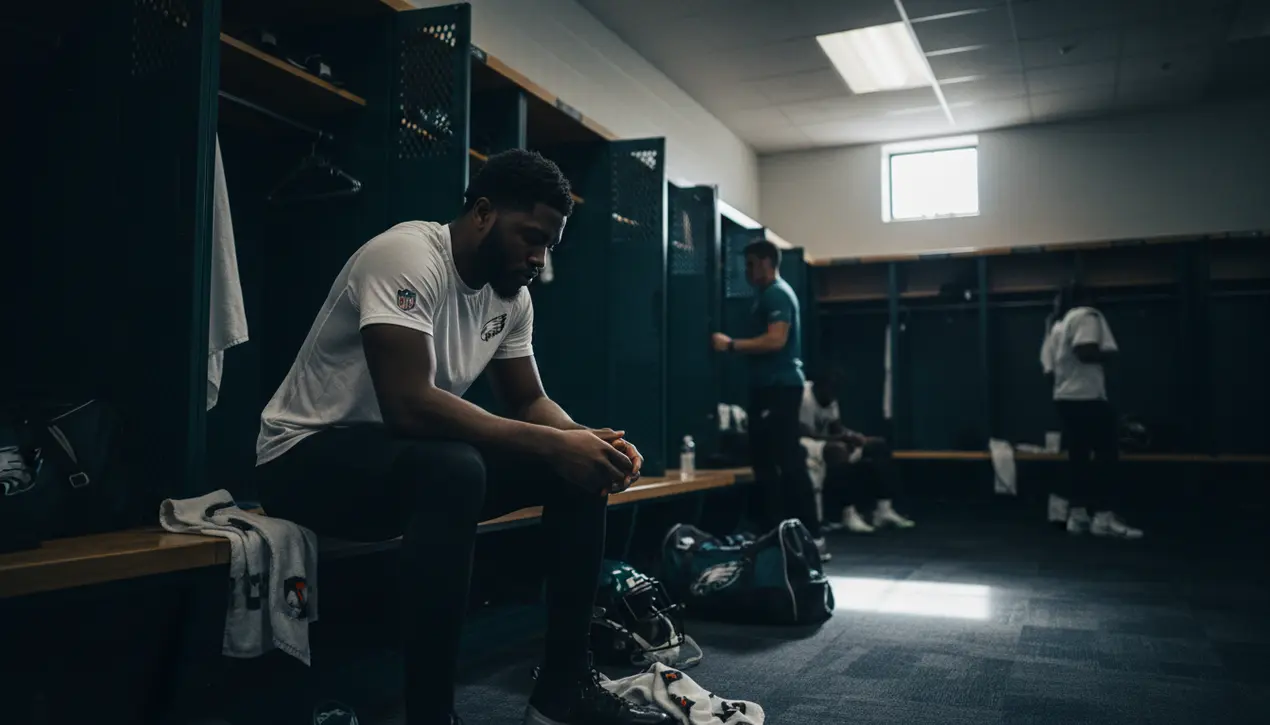- News
- football
- As Eagles search for answers in wake of loss to Cowboys, they should start by reexamining how they’re using Saquon Barkley

SportfootballInjuries and Suspensions
As Eagles search for answers in wake of loss to Cowboys, they should start by reexamining how they’re using Saquon Barkley
JA
Jack Turner
15 hours ago7 min read
ARLINGTON, Texas — In the analytical crucible of professional football, where every defeat demands forensic examination, the Philadelphia Eagles' 24-21 loss to the Dallas Cowboys reveals a statistical correlation so stark it cannot be ignored. The central figure is not the vocally frustrated A.J. Brown, but the quietly self-critical Saquon Barkley, whose usage rate has become the unofficial barometer for the team's fortunes.A year removed from a dominant season where he led the league with 2,005 rushing yards and 345 attempts, Barkley’s production has precipitously declined to 62. 2 yards per game on just 16.8 carries. The Eagles' record provides the context that transforms this from a mere individual statistic into a strategic indictment: in all eight of their victories this season, Barkley has received a minimum of 14 carries and 18 total touches; in all three of their losses, including Sunday's collapse, he was limited to 12 or fewer carries and 17 or fewer touches.This isn't a subtle trend—it's a blueprint for failure. While coaches like Nick Sirianni rightly preach a team-first ethos, refusing to assign blame to one person, the data screams that Philadelphia’s offensive identity is intrinsically linked to establishing their premier running back.The 'why' behind this correlation delves into the very soul of NFL offensive philosophy. A potent run game does more than accumulate yards; it functions as a physical and psychological weapon.Consistent rushing attempts wear down defensive fronts, control the clock to keep a defense fresh, and open play-action opportunities, creating a sustainable offensive ecosystem. The Eagles' explosive pass game can build a 21-point lead, as it did against Dallas, but without the grounding force of a committed run game, it proved fragile, evaporating under the pressure of 24 unanswered points.The counter-arguments are worth dissecting but ultimately crumble under scrutiny. Is it Barkley’s production or his opportunities? His 88 scrimmage yards in the loss to Denver ranked as his fifth-best output, proving he can produce even in defeat if given the chance.Is the correlation merely a byproduct of abandoning the run while playing from behind? An analysis of first-half touches alone shows that his three lowest opportunity games still produced two losses, dispelling that theory. The problem is systemic, involving an offensive line that, while statistically efficient in run-blocking according to ESPN’s metrics, struggled with unexpected defensive fronts, and a play-calling structure under coordinator Kevin Patullo that has, at critical moments, drifted away from its most reliable asset.Barkley himself, embodying the accountability of a franchise player, shouldered the blame, stating he's 'tired of the excuse' and is in a 'little funk,' but the reality is that the Eagles' offensive puzzle is missing its most crucial piece when he is not centrally featured. As the Eagles search for answers, the most glaring one is etched in their own win-loss record.The upcoming Black Friday game against the Chicago Bears, who rank in the bottom five for rushing yards allowed, presents a perfect opportunity to recommit to a philosophy that has proven successful. Letting Barkley carry them is not just an option; the data suggests it is a necessity for any serious playoff aspirations.
#featured
#Philadelphia Eagles
#Saquon Barkley
#running game
#offensive strategy
#NFL analysis
#team performance
Stay Informed. Act Smarter.
Get weekly highlights, major headlines, and expert insights — then put your knowledge to work in our live prediction markets.
Related News
Comments
Loading comments...
© 2025 Outpoll Service LTD. All rights reserved.